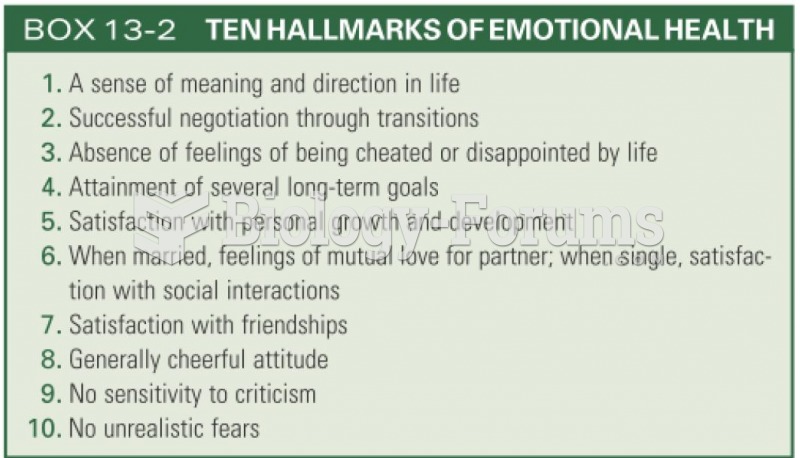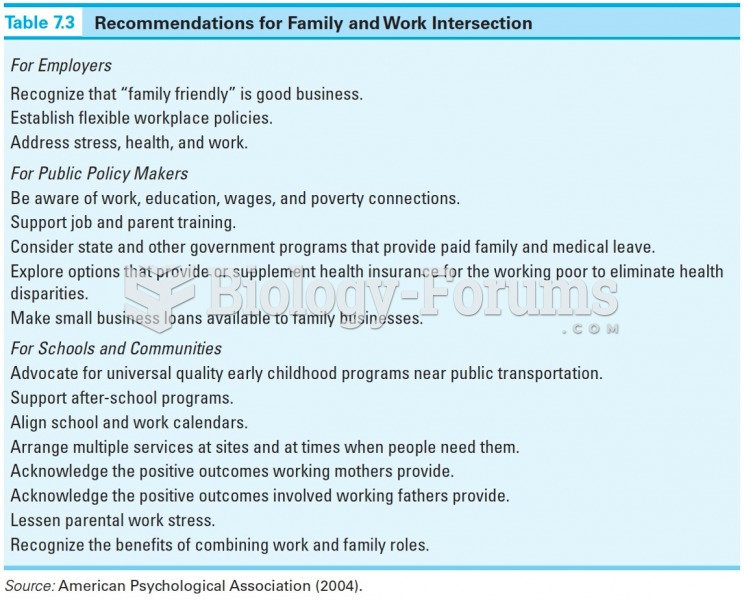|
|
|
The longest a person has survived after a heart transplant is 24 years.
All adverse reactions are commonly charted in red ink in the patient's record and usually are noted on the front of the chart. Failure to follow correct documentation procedures may result in malpractice lawsuits.
For about 100 years, scientists thought that peptic ulcers were caused by stress, spicy food, and alcohol. Later, researchers added stomach acid to the list of causes and began treating ulcers with antacids. Now it is known that peptic ulcers are predominantly caused by Helicobacter pylori, a spiral-shaped bacterium that normally exist in the stomach.
Calcitonin is a naturally occurring hormone. In women who are at least 5 years beyond menopause, it slows bone loss and increases spinal bone density.
Though newer “smart” infusion pumps are increasingly becoming more sophisticated, they cannot prevent all programming and administration errors. Health care professionals that use smart infusion pumps must still practice the rights of medication administration and have other professionals double-check all high-risk infusions.
 Elephant work camp in Thailand. Elephants are used for heavy forest work and in circus presentations
Elephant work camp in Thailand. Elephants are used for heavy forest work and in circus presentations
 Many people consider the British statesman Winston Churchill (1874–1965) to be an exemplar of the ...
Many people consider the British statesman Winston Churchill (1874–1965) to be an exemplar of the ...





